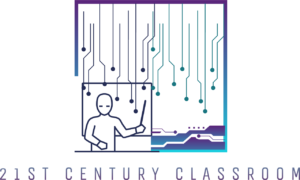In a world where effective communication is the key to success, mastering this art is crucial for personal and professional growth. Whether it’s conveying ideas, building relationships, or resolving conflicts, effective communication skills play a pivotal role. This blog aims to provide you with strategies to enhance your communication abilities and achieve success in all aspects of your life.
Understanding Effective Communication
Effective communication refers to the ability to convey information clearly, accurately, and concisely while ensuring mutual understanding. It plays a vital role in personal relationships, teamwork, leadership, and career advancement. By mastering effective communication skills, you can create stronger connections, avoid misunderstandings, and foster a positive environment.
Key Components of Effective Communication
1. Active Listening: The Foundation of Effective Communication
Active listening is the cornerstone of effective communication. It involves giving your full attention to the speaker, understanding their message, and responding appropriately. By practicing active listening, you demonstrate respect, empathy, and engagement in the conversation. Tips for active listening include maintaining eye contact, avoiding distractions, and asking clarifying questions to ensure mutual understanding.
2. Verbal Communication: Making Your Words Count
Verbal communication encompasses the words we choose, our tone of voice, and our body language. To improve verbal communication, it’s important to speak clearly and concisely, avoiding jargon or technical terms that may confuse the listener. Additionally, pay attention to your tone and body language, as they can convey underlying messages. Using positive language fosters a constructive atmosphere and encourages open dialogue.
3. Non-Verbal Communication: The Power of Body Language
Non-verbal cues, such as facial expressions, gestures, and posture, can significantly impact communication. Understanding and utilizing body language effectively can enhance your message’s clarity and strengthen the connection with the listener. By maintaining eye contact, using appropriate gestures, and mirroring the body language of the speaker, you can convey sincerity, trustworthiness, and engagement.
Overcoming Communication Barriers
1. Identifying Common Communication Barriers
Various barriers can hinder effective communication. Cultural differences, language barriers, and emotional obstacles can create misunderstandings and hinder the exchange of information. Recognizing these barriers is the first step in overcoming them.
2. Strategies to Overcome Communication Barriers
To overcome communication barriers, develop cultural intelligence by learning about different cultures, customs, and communication styles. Practice empathy and emotional intelligence to better understand others’ perspectives and emotions. By actively listening and being open-minded, you can bridge gaps and foster effective communication.
Tailoring Communication to Different Audiences
Recognizing that different audiences have diverse needs and preferences is crucial for effective communication. Whether you are communicating formally, informally, or in a professional setting, adjust your communication style accordingly. Tailor your language, tone, and level of formality to ensure your message resonates with your specific audience.
Developing Assertiveness in Communication
Assertiveness is an essential skill for effective communication. It involves expressing your thoughts, needs, and opinions in a direct and respectful manner, without being aggressive or passive. By practicing assertiveness, you can confidently convey your message while maintaining healthy relationships and mutual respect.
Conflict Resolution through Effective Communication
Conflicts are inevitable in any relationship or workplace setting. However, effective communication can help resolve conflicts constructively. By actively listening, expressing yourself clearly and calmly, and seeking a win-win solution, you can navigate conflicts and maintain positive relationships.
The Impact of Technology on Communication
Technology has revolutionized the way we communicate. While it offers convenience, it can also pose challenges. Digital communication tools lack non-verbal cues, making it important to use clear and concise language to avoid misunderstandings. Balancing digital and face-to-face communication is crucial for maintaining effective connections in the digital age.
Practicing Effective Communication in the Workplace
Effective communication is essential in the workplace. It promotes teamwork, productivity, and a positive work environment. By actively listening, providing constructive feedback, and being clear in your communication, you can foster collaboration, resolve conflicts, and achieve professional success.
Communication in Personal Relationships
Effective communication is the foundation of healthy personal relationships. By actively listening, expressing your feelings, and being open and honest, you can strengthen your connections and create a supportive and loving environment.
Mastering Public Speaking
Public speaking can be intimidating for many. However, with practice and the right techniques, you can become a confident speaker. Overcome public speaking anxiety by preparing thoroughly, practicing in front of a mirror or with supportive peers, and focusing on delivering your message with passion and conviction.
Takeaway
Mastering the art of effective communication is a lifelong journey. By understanding the key components of effective communication, overcoming barriers, tailoring your message to different audiences, and developing assertiveness, you can achieve success in both personal and professional realms. Remember, effective communication is not just about speaking; it’s about listening, understanding, and fostering meaningful connections. Apply these strategies, and watch your communication skills flourish, opening doors to endless opportunities for success.

